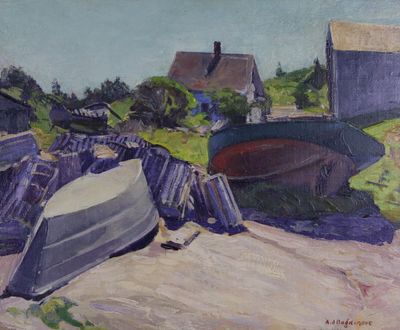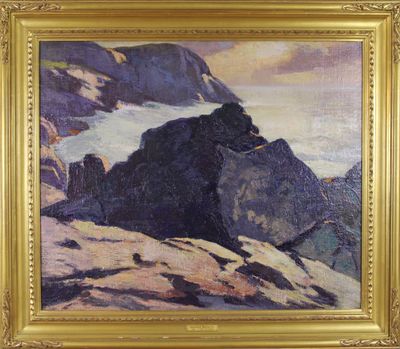Abraham Bogdanove
Born in Minsk, Russia, Abraham Bogdanove was a landscape, seascape and portrait painter who is best known for his images of Monhegan Island, off the coast of Maine. He also painted in Europe and in Canada at the Gaspe Peninsula.
Bogdanove studied in New York at the Art Students League, Cooper Union, the National Academy of Design, and Columbia University School of Architecture where he trained with and was studio assistant to the noted muralist, Francis Millet.
Between 1913 and 1930, Bogdanove completed numerous murals including historical scenes relating to the founding of America and commissions for numerous New York area school. During this time, he was devoting much time to his fine-art painting.
He first visited Monhegan in 1918, and returned annually for the remainder of his life. In his paintings, he was influenced by theories of Maximilian Toch, who advocated natural pigments and limited colors. Many of Bogdanove's paintings have abstract qualities.
For twenty-two years he taught drawing, painting, and anatomy at the New York School of Industrial Art, and from 1919 to 1942 at City College of New York. Following his retirement in 1942, he moved to Dunbarton, New Hampshire.
He exhibited widely including at the Metropolitan Museum, the National Academy of Design, and the Corcoran Gallery of Art.



